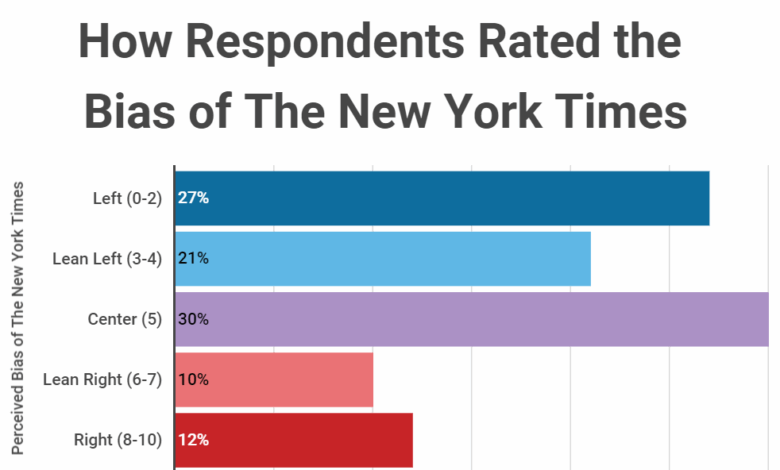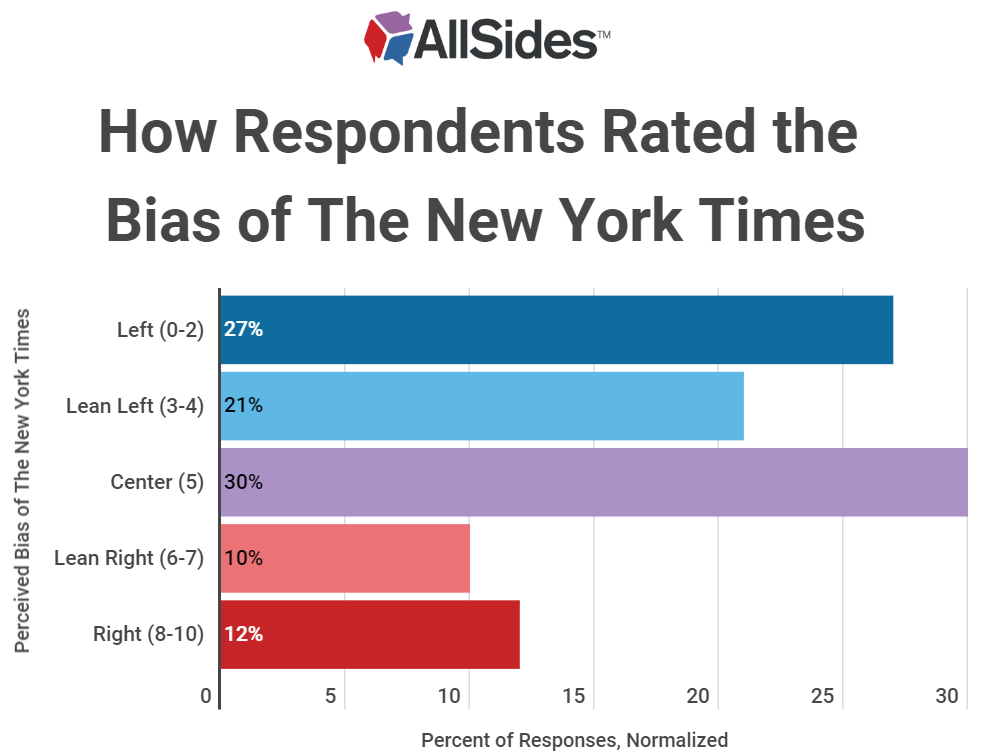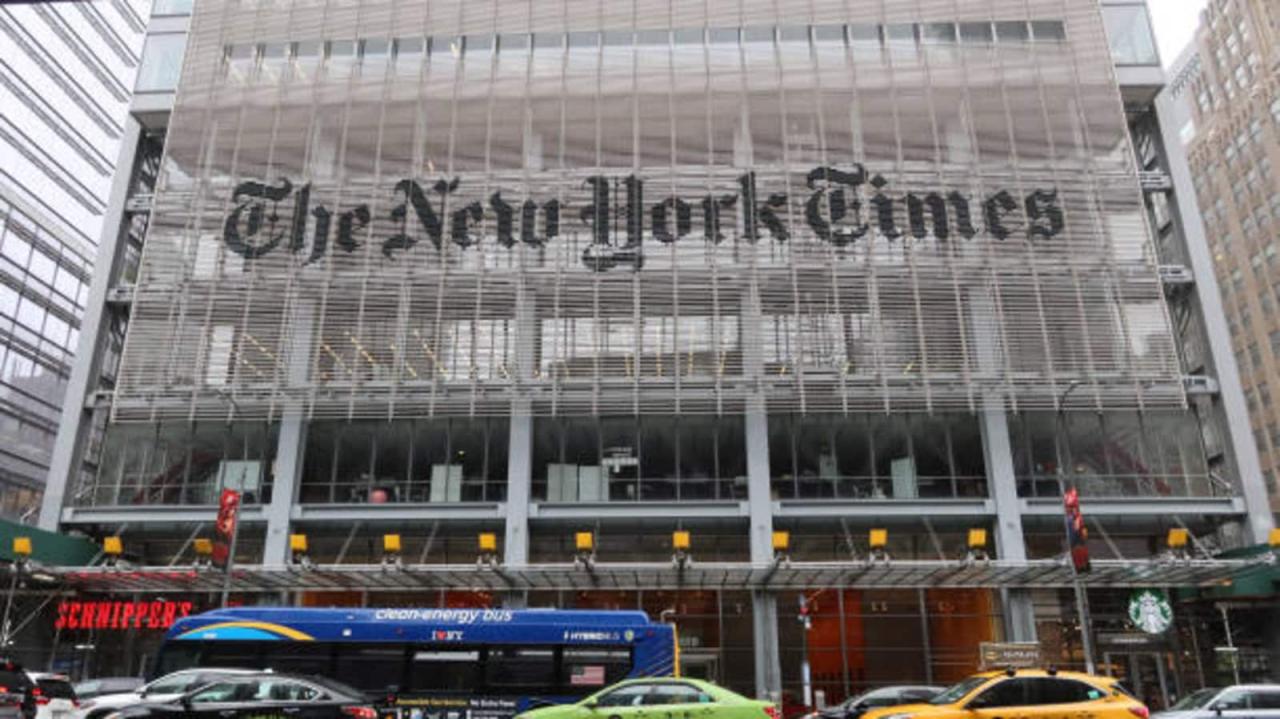
Is the New York Times Bestseller List Politically Biased?
Is the New York Times bestseller list politically biased? That’s a question that’s been buzzing around for a while, and honestly, it’s a fascinating rabbit hole to dive into. We’re not just talking about left vs. right; it’s about the complex interplay of sales figures, genre representation, author backgrounds, reader reviews, and even the influence of current events.
This isn’t a simple yes or no answer, folks. Prepare for a deep dive into the world of publishing, politics, and those coveted bestseller spots.
This post will dissect the methodology behind the NYT bestseller list, comparing it to other prominent lists to see if any glaring inconsistencies emerge. We’ll then examine genre representation, looking for patterns and potential biases in the types of books that consistently dominate the rankings. Further, we’ll delve into author political affiliations and explore if there’s a correlation between an author’s views and their book’s success.
Finally, we’ll examine reader reviews and public perception to gain a more complete picture. Get ready for some insightful analysis!
The Composition of the Bestseller List: Is The New York Times Bestseller List Politically Biased

The New York Times bestseller list, a highly influential indicator of book popularity, is compiled using a rigorous, albeit somewhat opaque, methodology. Understanding this methodology is crucial for interpreting the list and recognizing its limitations. The process involves more than simply counting sales; it incorporates a complex system of data collection, verification, and reporting.
The primary criterion for inclusion on the New York Times bestseller list is sales data. The list doesn’t represent a simple tally of all books sold; instead, it focuses on sales reported by a network of booksellers across the country. These retailers, ranging from large chains to independent bookstores, submit their sales figures to the Times on a weekly basis.
The reporting period is typically the previous week, creating a snapshot of current book popularity. This system, while seemingly straightforward, introduces potential biases based on the participating retailers and their reporting practices.
Data Collection and Verification
The New York Times employs a third-party data collection and verification firm to ensure accuracy and prevent manipulation of the sales figures. This firm aggregates the data received from booksellers, cross-referencing it to identify potential discrepancies or anomalies. The verification process aims to minimize errors and prevent fraudulent reporting. While the specific methods employed by the firm are not publicly disclosed, the goal is to create a reliable and consistent representation of book sales across a wide range of retail channels.
This process, however, doesn’t completely eliminate the possibility of inaccuracies or inconsistencies.
Comparison with Other Bestseller Lists
The New York Times bestseller list is not the only game in town. Other publications, such as USA Today and Publishers Weekly, also publish their own bestseller lists. While they share the common goal of identifying popular books, their methodologies differ significantly. This leads to variations in the composition of the lists, highlighting the subjective nature of measuring literary success.
| Bestseller List | Data Source | Reporting Period | Verification Method |
|---|---|---|---|
| New York Times | Network of booksellers | Weekly | Third-party data firm |
| USA Today | Nielsen BookScan (primarily) | Weekly | Nielsen BookScan’s internal processes |
| Publishers Weekly | Publishers’ reports and Nielsen BookScan | Weekly | Editorial review and data analysis |
Genre Representation and Political Leanings

The New York Times Bestseller List, while ostensibly a reflection of popular reading trends, inevitably reflects the broader cultural and political landscape. Analyzing the representation of different genres over time offers valuable insight into potential biases and the relationship between genre and political messaging. The prevalence of certain genres, and the consistent presence of specific types of books, can illuminate underlying patterns and suggest areas for further investigation.Genre representation on the bestseller list is not static; it fluctuates based on current events, societal trends, and publishing industry decisions.
However, some general patterns emerge. For instance, fiction consistently occupies a significant portion of the list, often outnumbering non-fiction titles. Within fiction, certain subgenres, such as thrillers, romance, and literary fiction, experience periods of greater prominence. Non-fiction, while sometimes less prevalent overall, often dominates the list during periods of significant political or social upheaval.
Fiction Subgenres and Political Nuances
While fiction is often perceived as less overtly political than non-fiction, subtle political themes and leanings frequently weave their way into narratives. For example, dystopian fiction often serves as a commentary on current societal issues, while historical fiction can subtly reinterpret past events and their implications. The popularity of specific subgenres at any given time can indirectly reflect prevailing societal anxieties or political discussions.
The dominance of thrillers, for instance, might suggest a collective fascination with power, control, and uncertainty – themes often intertwined with political discourse.
Non-Fiction and Explicit Political Commentary, Is the new york times bestseller list politically biased
Non-fiction, particularly in the categories of political commentary, biography, and current events analysis, explicitly engages with political issues. Books within these genres often directly address political ideologies, policies, and personalities. Their presence and ranking on the bestseller list can be highly indicative of prevailing political interests and debates. The relative success of books with differing political perspectives can be interpreted as a measure of public engagement with various viewpoints.
Examples of Books with Explicit Political Themes
The following examples illustrate the presence of books with explicitly political themes on the New York Times Bestseller List. Their placement and duration on the list provide insights into the public’s reception of differing political viewpoints and the overall political climate at the time of their publication.
- Fire and Fury: Inside the Trump White House by Michael Wolff: This book, published shortly after Donald Trump’s inauguration, offered a highly critical account of his administration and spent several weeks at the top of the bestseller list, demonstrating substantial public interest in negative portrayals of the presidency.
- A Promised Land by Barack Obama: Obama’s memoir, covering his early political career and presidency, achieved significant success, showcasing the enduring public interest in the lives and perspectives of influential political figures.
- Hillbilly Elegy: A Memoir of a Family and Culture in Crisis by J.D. Vance: This book, exploring the social and economic challenges faced by working-class communities in Appalachia, became a bestseller and sparked discussions about class divisions and their political implications.
So, is the New York Times bestseller list politically biased? The answer, as we’ve explored, is far from simple. While the methodology appears objective, focusing primarily on sales data, the reality is far more nuanced. Genre representation, author backgrounds, public perception, and external factors all play a significant role. Ultimately, while pure bias might be difficult to definitively prove, the patterns and trends we’ve uncovered suggest a complex relationship between politics, publishing, and the pursuit of bestseller status.
It’s a conversation that deserves continued scrutiny and discussion.
So, is the New York Times bestseller list politically biased? It’s a question I’ve been pondering, especially considering how different narratives gain traction. Thinking about power structures and accountability got me considering the crucial issue of how to hold armed police to account in britain , which highlights the need for transparent systems. This relates back to the bestseller list because both showcase how narratives – whether in books or policing – can be shaped by underlying power dynamics.
Ultimately, both deserve careful scrutiny.
So, is the New York Times bestseller list politically biased? It’s a question many ponder, and the answer, I suspect, is complex. It made me think about how influence works in other contexts, like the article discussing how indians have grown used to getting nice things from politicians , highlighting the power dynamics at play. This raises the question again: how much does subtle influence shape what books become bestsellers, and is that influence always transparent?
So, is the New York Times bestseller list politically biased? It’s a question I’ve been pondering, especially considering how different societal pressures impact publishing. For instance, the massive shifts happening in China, like the health care reform is upending the lives of chinas doctors , could easily influence what kinds of stories resonate and ultimately make the bestseller lists, both domestically and internationally.
This makes me wonder even more about the inherent biases shaping what we read.

